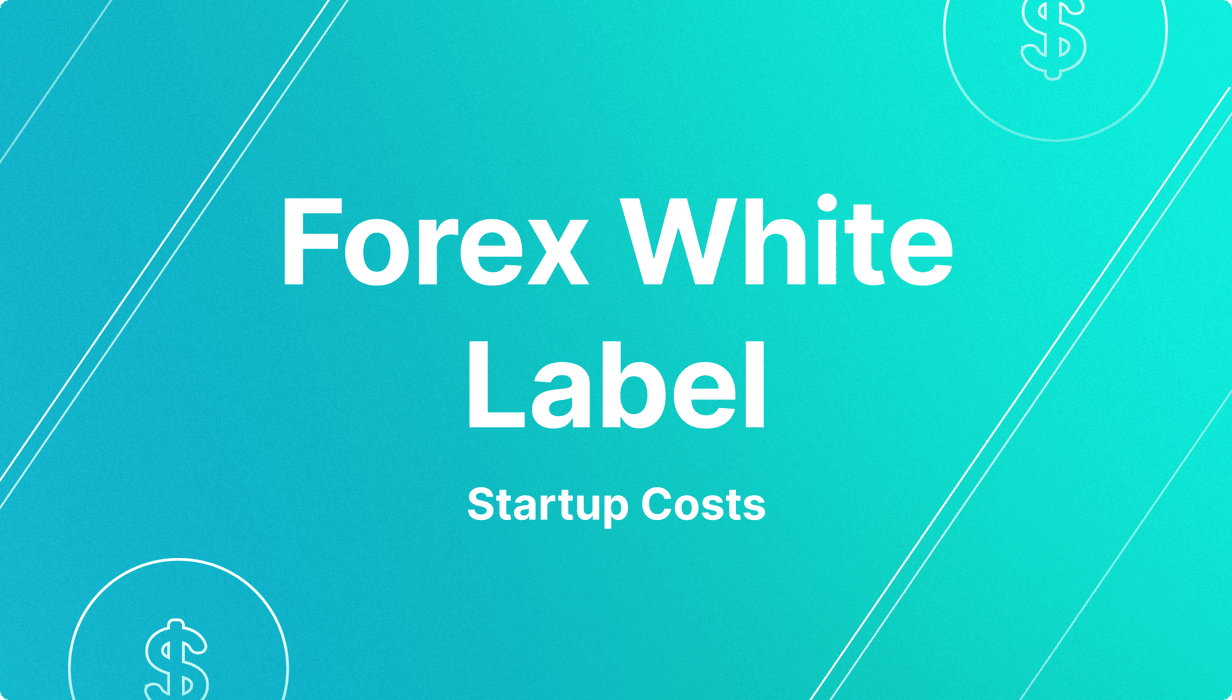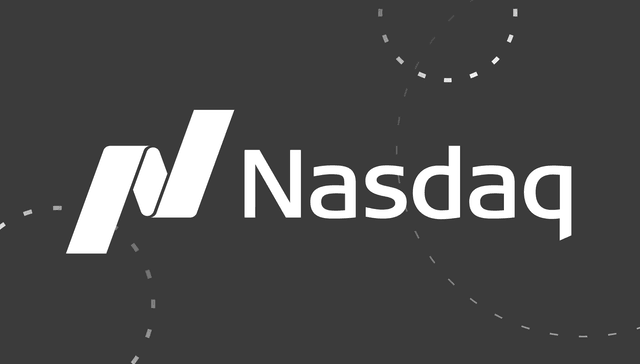Forex White Label Startup Costs Explained: What Brokers Must Budget For

If you're planning to launch a Forex brand, your first question is likely the most direct: what will it actually cost?
To budget effectively, you need to understand what drives that final figure. Your costs will be shaped by your choices in technology, your approach to liquidity and payments, and your chosen regulatory path.
This guide maps the real line items, compares white label vs. build-from-scratch, and shows how brokers budget forex white label startup costs smartly without slowing time to market.
Have a Question About Your Brokerage Setup?
Our team is here to guide you — whether you're starting out or expanding.
What is Forex White Labelling?
A forex white label solution lets you run a fully branded brokerage on a provider’s infrastructure. You keep the client relationship, pricing policies, instruments, leverage tables, and partner programmes. The vendor runs the platforms, integrations, hosting, security, and ongoing upgrades.
For growth teams, the appeal is speed and focus. You enter the market in weeks, direct capital to acquisition and VIP service, and expand into multi-asset or crypto later—without rebuilding core plumbing.

What is Included in a Forex White Label Solution?
- Trading platform(s) with branding (e.g., MT*4/MT*5, cTrader, or proprietary), mobile and web terminals.
- Bridges/aggregation and liquidity access to Tier-1 banks and non-bank LPs.
- CRM & back office for onboarding/KYC, roles and permissions, billing, analytics, and partner/IB portals.
- Risk management toolkit for A-/B-book configuration, exposure limits, alerts, and reporting.
- Hosting, monitoring, and 24/7 technical support with uptime SLAs and routine upgrades.
- Payments stack (cards, wires, PSPs, and optional crypto rails) and treasury tools for reconciliation.
- APIs & integrations (FIX for prices/orders; REST/WebSocket for quotes and reporting), plus data-warehouse exports and SSO.
- Optional modules such as copy trading, PAMM/MAM, affiliate tracking, and branded mobile apps.
A brokerage's technology is only as good as the team supporting it. B2BROKER provides round-the-clock, multilingual technical support to ensure your cTrader, MT*4, or MT*5 platform runs smoothly and any issues are resolved instantly, allowing you to focus on your clients.
Breaking Down the Average Initial Investment Required for a White-Label Forex Startup
“Average” only makes sense with scope. A lean, single-platform FX brand with basic payments and one jurisdiction sits at the low end; a multi-asset launch with extra modules and broader licensing pushes higher.
Most white-label setups land between $35,000 and $100,000 upfront. That buys platform branding, core integrations, hosting, and a working back office so you can admit clients and take deposits.
Time matters as much as money. A focused white label can be production-ready in 4–8 weeks. Building a brokerage from scratch routinely takes 9–18 months before the first trade, with total budgets well above $500,000 once engineering, certifications, security hardening, and vendor audits are in.
What moves your number? Platform choice (one vs. several), asset scope (FX-only vs. FX + CFDs + crypto), the licensing path, the number of payment rails, and how much you customise at launch. Headcount, marketing, and partner programmes add on top once you go live.
Overall, forex white label startup costs might range from $35,000 to $100,000. The result (full or partial) depends on your chosen WL model. It is much more affordable than the $500,000 needed to build an FX brokerage from scratch. This major factor makes newbies lean towards working with trustworthy white-label providers.
Start your Forex Brokerage in Weeks, not Months
All Technology, Liquidity & Payment Integrations Included
White-Label cTrader/B2TRADER with Full Back Office Support
Compliance-Ready Setup with Ongoing Technical Support

Costs of White Labelling vs. Building From Scratch
White label is fast and predictable. You pay a defined setup fee and a monthly fee. The provider runs platforms, hosting, upgrades, and a lot of the security work. You launch quickly, then differentiate through pricing, education, client service, and product. The trade-off: you don’t own the core code.
Building from scratch is full control at full cost. You fund engineering, certifications, security hardening, and vendor audits. Timelines stretch, and every new asset class or payment rail becomes another project. You gain unlimited customisation, but breakeven drifts and operational risk sit squarely on your team.
he UK remains the top FX hub with ~38% of global turnover—roughly twice the US share.
Advantages of the Forex White Label Model
White labelling solves the first constraint new brokers face: time. It also keeps capital light at the start, so you can test positioning, build partnerships, and scale only when the data supports it.
Faster Time to Market
A white-label stack arrives pre-integrated. Trading platforms, back office, bridges, liquidity, and payments are already wired, so your team focuses on branding, pricing, and onboarding rather than plumbing.
Most projects move from scope to first deposits in weeks, not quarters. That speed matters when you’re competing for the same early adopters and partner networks.
Lower Barriers to Entry and Cost Efficiency
You avoid the heavy capex of platform development, security hardening, and vendor certifications. Instead, you pay a defined setup and a predictable monthly fee.
That shifts risk from fixed cost to operating cost. Cash flow stays flexible, and you can direct more budget to acquisition, education, and VIP care—where growth actually happens.
Customisation and Scalability
You still shape the experience. Brand and UI, instruments, leverage, spreads, account types, and partner schemes all sit under your control. As volumes grow, you add modules, like copy trading, MAM/PAMM, new payment rails, or even a second platform, without re-platforming.
This “configure first, extend later” approach lets you ship quickly and only invest in deeper custom work once you see traction.
Access to Advanced Technology and Liquidity
Institutional-grade execution is difficult to build on day one. With a white label, you inherit mature bridges and aggregators, risk dashboards, and analytics that have already been proven under load.
You also gain immediate access to multi-asset liquidity, whether bank or non-bank, so you can price competitively and work larger tickets from launch.
Ability to Focus on Growth and Branding
Infrastructure shouldn’t consume your calendar. When the vendor runs upgrades, hosting, and monitoring, your team can focus on content, partnerships, regional launches, and VIP retention.
That focus compounds. Stronger education funnels, better partner economics, and faster support response do more for P&L than shipping one more internal feature.
Drawbacks of the White Label Model
White labelling trades speed and lower capex for constraints you need to plan around. None of these are deal-breakers, but they affect budgeting, positioning, and your roadmap from day one.
1. Paying the Upfront Licence
Even with lower expenditures than a ground-up build, the initial licence and setup remain a real cash outlay. You’ll sign before revenue arrives, and you’ll still carry early costs for payments onboarding, marketing, and support.
Plan a runway that covers the setup fee plus 3–6 months of operating expenses. That buffer lets you acquire clients, stabilise KPIs, and avoid cutting growth spend just as you enter the market.
2. Limited Control Over Technology and Features
You run on a vendor’s stack. Deep changes to the platform, risk engine, or UI may sit on the provider’s roadmap, not yours, and custom work usually follows a queue and a change-control process.
This doesn’t block differentiation, but it shapes it. Most brokers win on product mix, pricing, education, partners, and VIP care, rather than rewriting core matching or bridge logic in month one.
3. No Intellectual Property Rights
A white label doesn’t grant ownership of the underlying code. Your long-term value sits in clients, data, brand, and processes, not in platform IP, and switching vendors later can introduce migration effort and cost.
Address this up front. Secure clear SLAs, data-portability terms, and exit provisions. If you expect to insource components over time, design for it—keep clean data exports, document integrations, and avoid bespoke items you can’t replicate.
About 62% of FX turnover was cross-border in April 2022, reinforcing the need for robust onboarding, limits, and payment rails.
The Costs for a Forex White Label Setup
Budgets only make sense when you know what each line covers. Below is how a realistic 12-month budget breaks down.
Infrastructure and Technology Costs
Infrastructure starts with the trading platform and the back office that run your brokerage; reliability and performance depend on this layer. Costs vary by ready-made vs. customised setup, and you must also plan for hosting, monitoring, updates, and uptime SLAs as volumes grow.
- Initial Setup Fee (Full White Label Package): $15,000 – $50,000 (One-Time)
- Monthly Platform & Hosting Fees: $7,000 – $15,000+ (Recurring)
- Ongoing Server Maintenance & Upgrades: Typically included in the monthly platform fee.
Regulation and Licensing Costs
This covers licensing and legal work to operate under the white-label model; totals depend on jurisdiction, product scope, and brand reputation, with timelines ranging from months offshore to a year or more in major markets.
- Corporate Services & Legal Fees: $15,000 – $50,000 (One-Time)
- Minimum Capital Requirements: Varies by jurisdiction, from $20,000 (Tier-2) to €730,000+ (Tier-1).
Marketing and Branding Costs
Marketing and branding play an important role in Forex, and therefore, they will take a decent portion of your Forex white label cost. Expect to spend on identity, site/UX, content, paid acquisition, and partner/IB programmes to drive early deposits and retention.
- Initial Brand Kit (Logo, Design System): $2,000 – $5,000
- Website Development: $10,000 – $30,000
- Monthly Marketing Budget (Launch Phase): $15,000 – $50,000+
Risk Management and Liquidity Costs
You pay to connect and maintain liquidity sources and to run a disciplined risk framework; both are essential for reliable execution, stable P&L, and broker resilience in volatile markets.
- Liquidity Connection Fee: ~$5,000 (One-Time)
- Margin Deposit (Collateral): $50,000 – $100,000+
- Monthly Minimums & Volume Fees: Varies by provider.
Compliance and Legal Support Costs
Compliance is continuous: onboarding (AML/KYC), monitoring, reporting tools, and periodic counsel all add to opex—but they protect licences and reduce operational surprises.
- Ongoing Compliance Consulting: $2,000 – $5,000 per month
- Annual Audits & Regulatory Filings: $10,000 – $25,000 per year
Payment Processing Costs
Payment rails drive conversion and forex white label startup costs. You’ll need to onboard card acquirers and PSPs, enable bank rails (SEPA/SWIFT/local), and manage treasury and chargebacks.
- PSP Integration Fees: $500 – $2,500 per provider
- Transaction Fees: 1% – 5% of volume, depending on the method (e.g., credit cards vs. bank wire).
Trading Instruments Costs
Most forex brokers today offer access not only to the FX market but also to CFDs, derivatives, etc., so the more markets connected in the process, the higher the price of the final product.
- Standard Asset Classes (Forex, Major Indices): Often included in the base white label package.
- Exotic Instruments or Custom Data Feeds: Can cost an additional $1,000 – $5,000+ per month per feed.
Localisation and Multilingual Interface Costs
Global clients expect local language and regional nuance. Budget for translations, multilingual support staffing, and ongoing updates as you expand into new markets.
- Translations & updates: ~$0.08–$0.20 per word
- Multilingual support staffing: region-dependent
Want to Reach Clients Globally?
B2CORE, B2BROKER’s CRM and back-office solution, includes integrated Weblate localisation at no additional charge, which removes a separate tooling subscription and speeds content updates across languages.
How to Choose a Forex White Label Solution
Pick a Forex WL provider that matches your model. Your goal is a fast, reliable launch now, with room to scale into multi-asset, new regions, and deeper partnerships later.
1. Assess Your Business Goals and Target Market
Decide who you serve (retail, VIP, professional), which assets you need at launch, and where you’ll operate. Scope drives platform choice, liquidity mix, payments, and licensing.
2. Evaluate Platform Reliability and Technology Stack
Ask for uptime history, latency under load, and real throughput. You’ll want FIX for prices/orders, REST/WebSocket for ops and reporting, clean data exports, a proper UAT, and versioned APIs.
3. Understand the Pricing and Fee Structure
Map setup, monthly licence, connectivity, market data, and support tiers. Clarify volume bands, overages, and any pass-through costs so margin holds at scale.
4. Check Liquidity and Risk Management Options
Depth and diversity of LPs matter more than a tight top-of-book. Verify bridge/aggregation quality, A/B-book tooling, pre-trade limits, exposure dashboards, and TCA for evidence.
5. Review Regulatory Alignment and Compliance Support
Choose a stack that fits your jurisdictions. You’ll need KYC/AML onboarding, comms capture, trade-reporting connectors, audit-ready records, and readiness for faster settlement cycles.
6. Compare Support and Service Levels
Round-the-clock markets need round-the-clock help. Confirm 24/7 support, incident SLAs, onboarding enablement, escalation paths, and a transparent roadmap.
Build a Forex White Label Setup Designed for Your Brokerage Needs with B2BROKER
Move from budgeting to execution. Formalise scope, request like-for-like quotes, and compare partners on technology, liquidity, compliance support, and service.
B2BROKER delivers an integrated stack: multi-asset liquidity, institutional trading platforms, back office, payments, and risk tooling—wired together and supported 24/7. You get transparent commercials, predictable timelines, and a rollout measured in weeks, not quarters.
Discover the Tools That Power 500+ Brokerages
Explore our complete ecosystem — from liquidity to CRM to trading infrastructure.
Recommended articles
Our team will present the solution, demonstrate demo-cases, and provide a commercial offer







